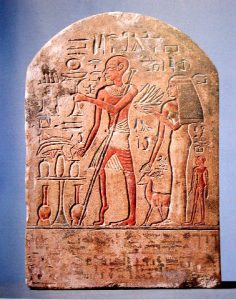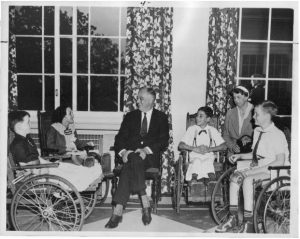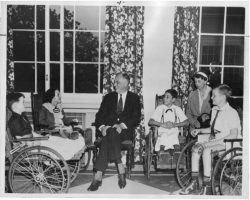Polio Is Almost Gone!
For thousands of years, people knew that children sometimes became paralyzed after a fever. Many people thought that the problem was a result of teething. In reality, it was the result of a viral infection that struck when the child was no longer protected by his or her mother’s antibodies. One or both legs could be affected. Severe cases affected the arms as well. The muscles in the paralyzed limb would shrink from disuse.

Here’s a fascinating lecture about the history of polio and polio vaccines:
In the old days, this problem of infantile paralysis occurred mainly in young children, and the cases were spread out over time. But starting in the late 1880s, big epidemics of this problem started happening in Europe. In the early 20th century, big epidemics of polio started happening in the United States. Many young people died or were paralyzed. In some cases, even the muscles of the diaphragm were paralyzed. These patients could survive only with the help of an iron lung. Here’s a documentary about a woman who lived for 60 years in an iron lung.
In 1921, Franklin Delano Roosevelt came down with a fever that led to a case of permanent paralysis. At the time, most people assumed that his paralysis was due to polio. Recently, however, some medical historians have suggested that the correct diagnosis might have been Guillain-Barré syndrome, which causes a similar form of paralysis. Yet Roosevelt’s diagnosis of polio, whether it was correct or not, changed history.
Roosevelt never gave up hope that his paralysis would be cured. At the resort in Warm Springs, Georgia, Roosevelt met many children who had been paralyzed by polio. In 1927, Roosevelt bought the Warm Springs resort and dedicated it to the care of polio survivors.

In 1927, Franklin Delano Roosevelt bought the Warm Springs resort and turned it into a center for survivors of polio. He became President of the United States in 1933.
In 1932, Roosevelt was elected President of the United States. While he was President, he founded the National Foundation for Infantile Paralysis, to combat polio. The organizers of an early fund-raiser suggested that the people could send dimes to the White House to support polio research. Singer/songwriter Eddie Cantor suggested that people were sending their dimes marching to Washington, so he called it the March of Dimes. The organization’s name was eventually changed to the March of Dimes. Dr. Jonas Salk, whose work was funded by the March of Dimes, developed the first effective polio vaccine. After the development of an effective polio vaccine, the March of Dimes turned its attention to preventing and managing birth defects.
When Dr. Jonas Salk announced the success of the first polio vaccine, he became a national hero.
Salk’s vaccine was a “killed” vaccine, which meant that it contained viruses that were so badly damaged that they could not be taken up and copied by a living cell. Thus, these “killed” viruses cannot create an infection. The problem with the original Salk vaccine was that it was not completely effective. In 1962, a “live” polio vaccine developed under the leadership of Dr. Albert Sabin was introduced. Sabin’s vaccine made it possible to eradicate polio. Not only was it more effective in preventing paralysis, it was better at preventing poliovirus infection. The problem with the live vaccine was that the vaccine viruses sometimes mutated back to a dangerous form. As a result, an improved version of the “killed” vaccine is now used in areas where polio is no longer circulating.
Today, the world is in the final stages of a campaign to drive polio into extinction. Soon, we will be living in a polio-free world.


